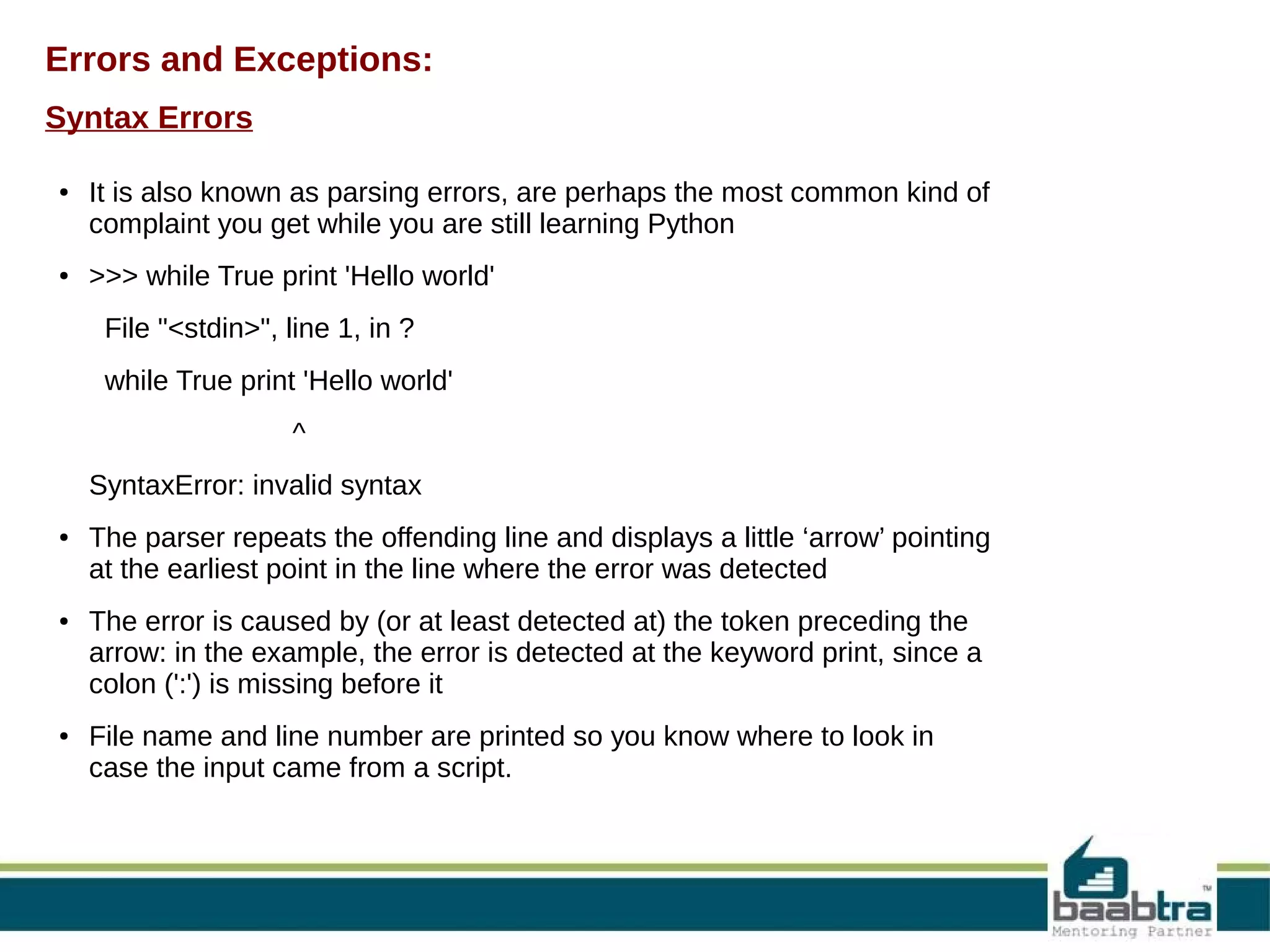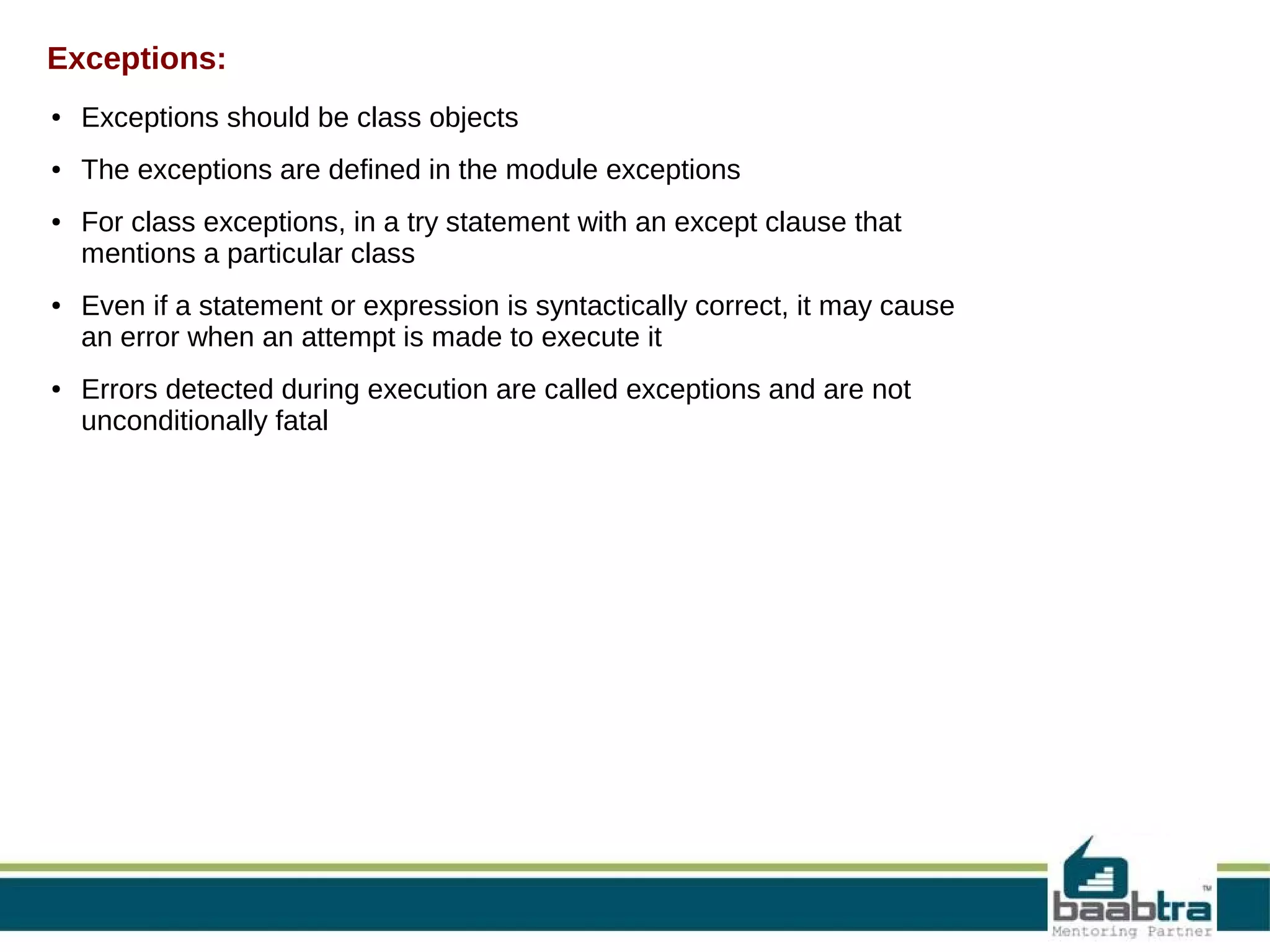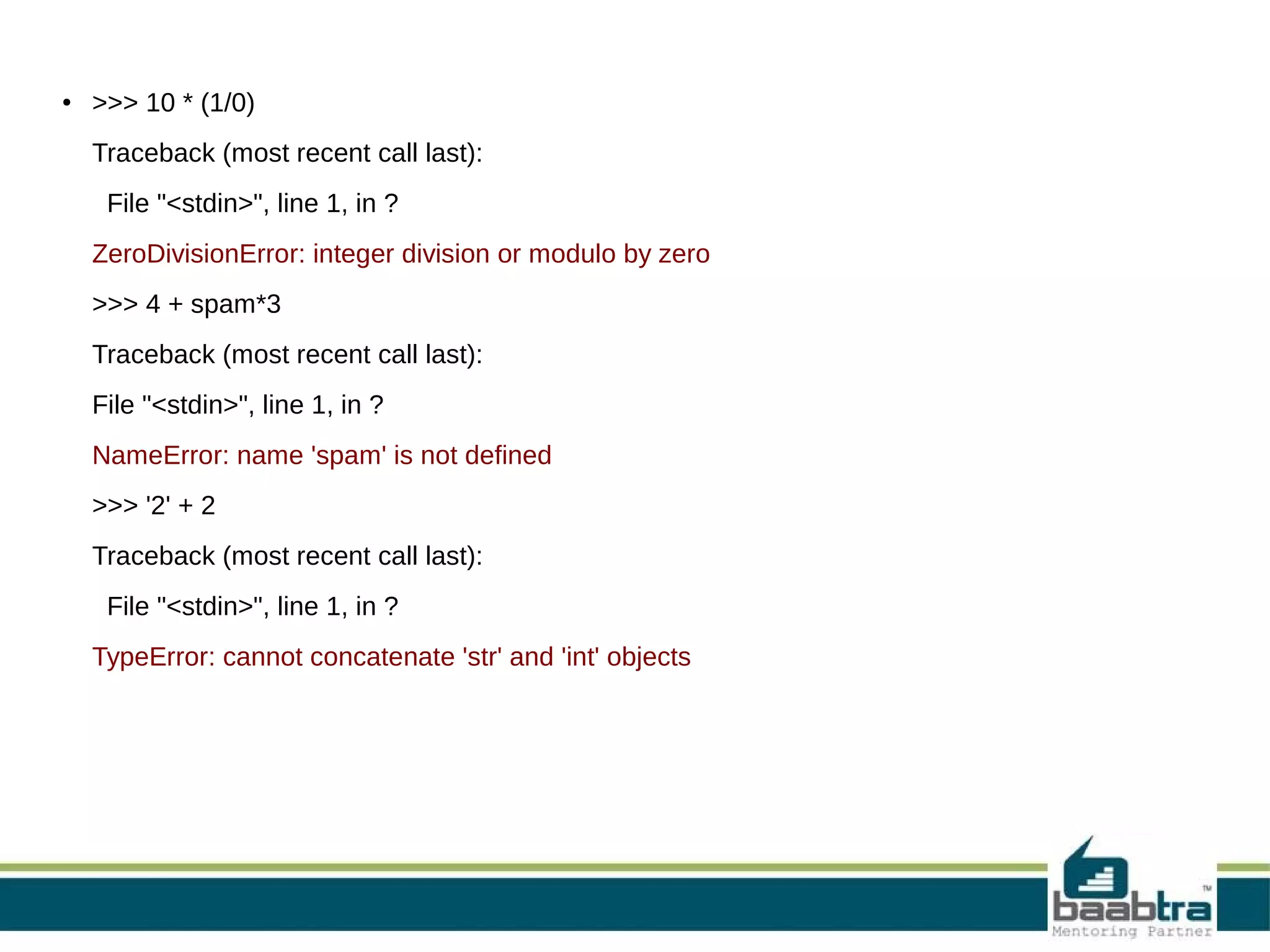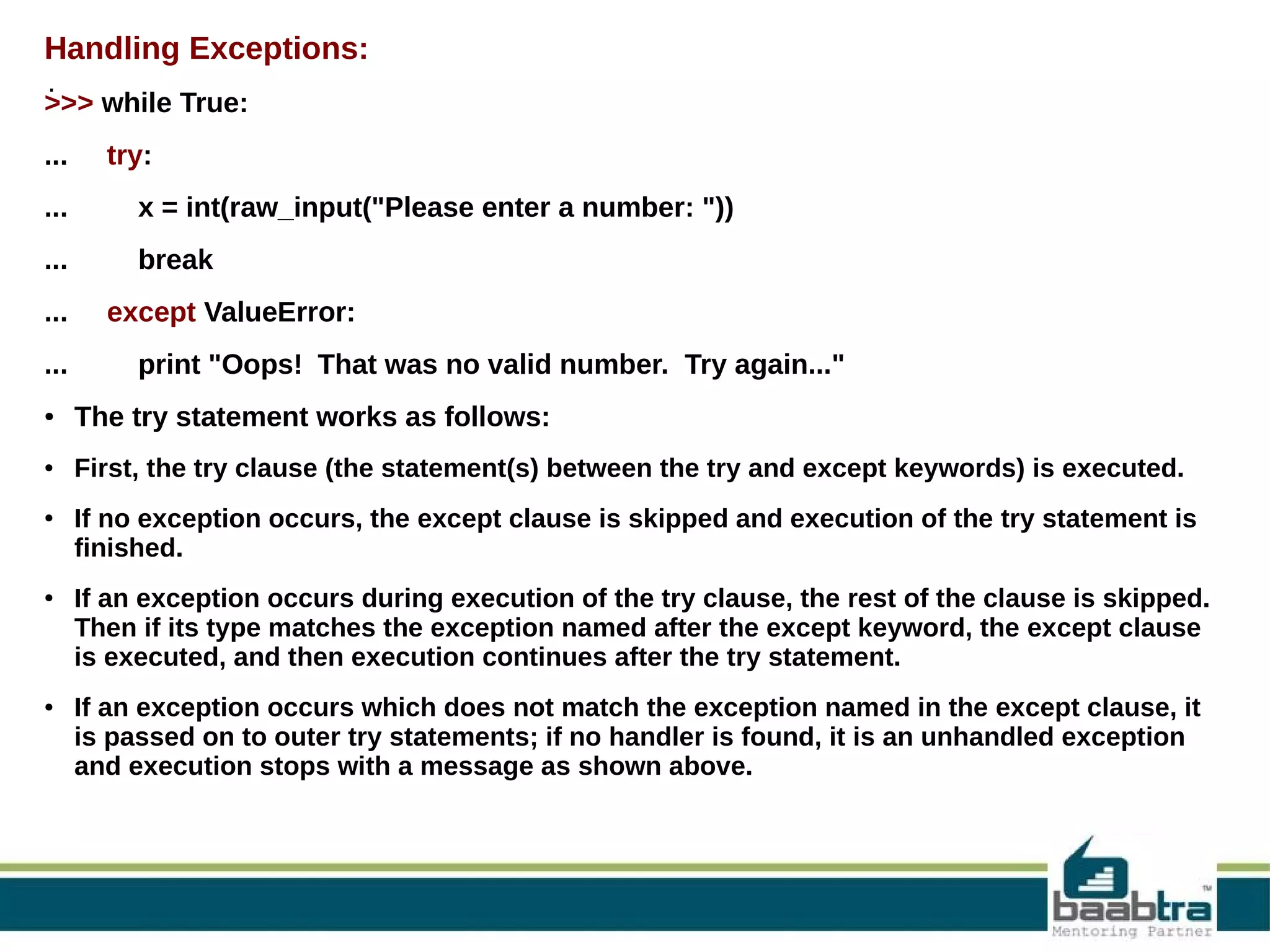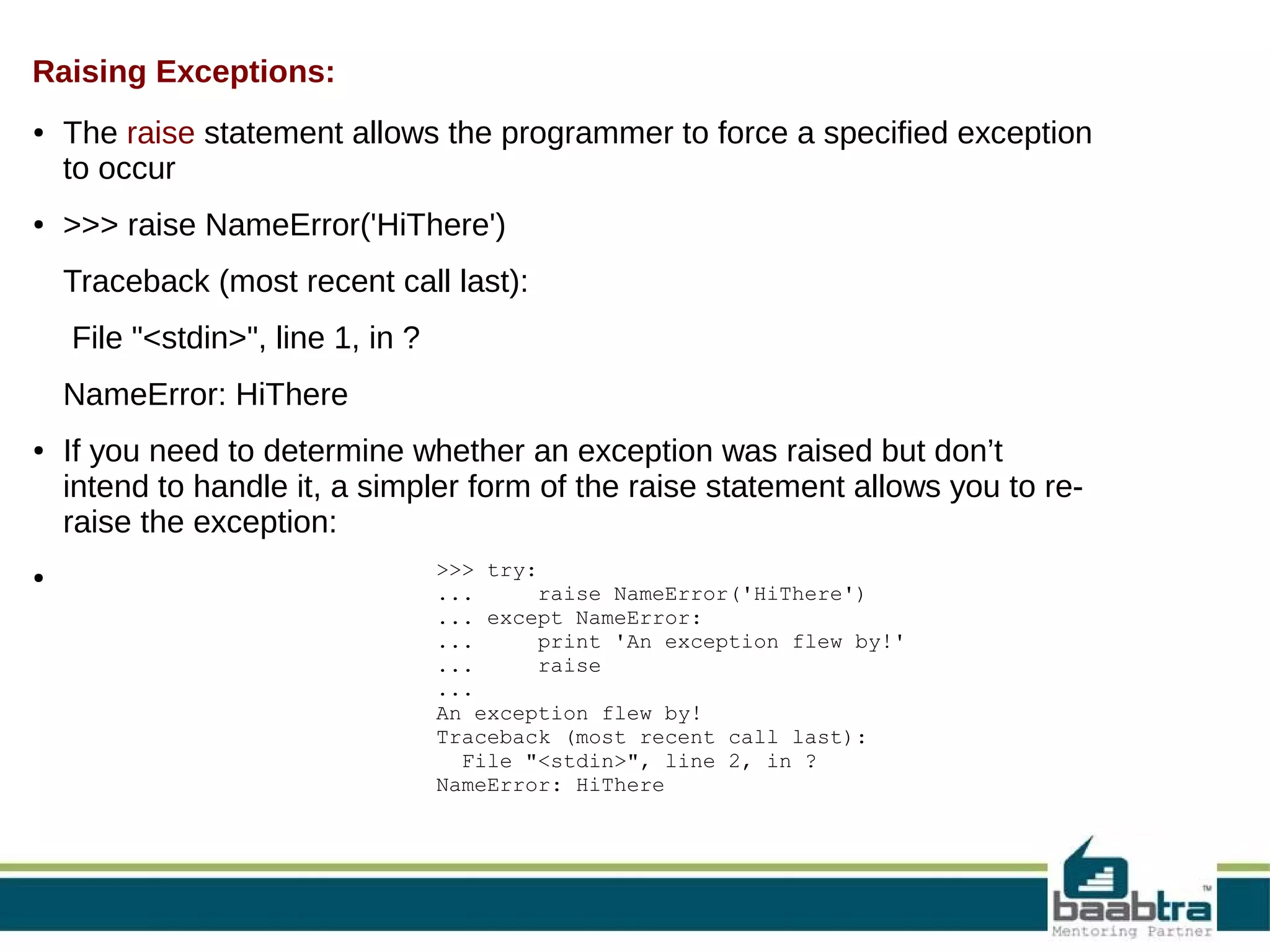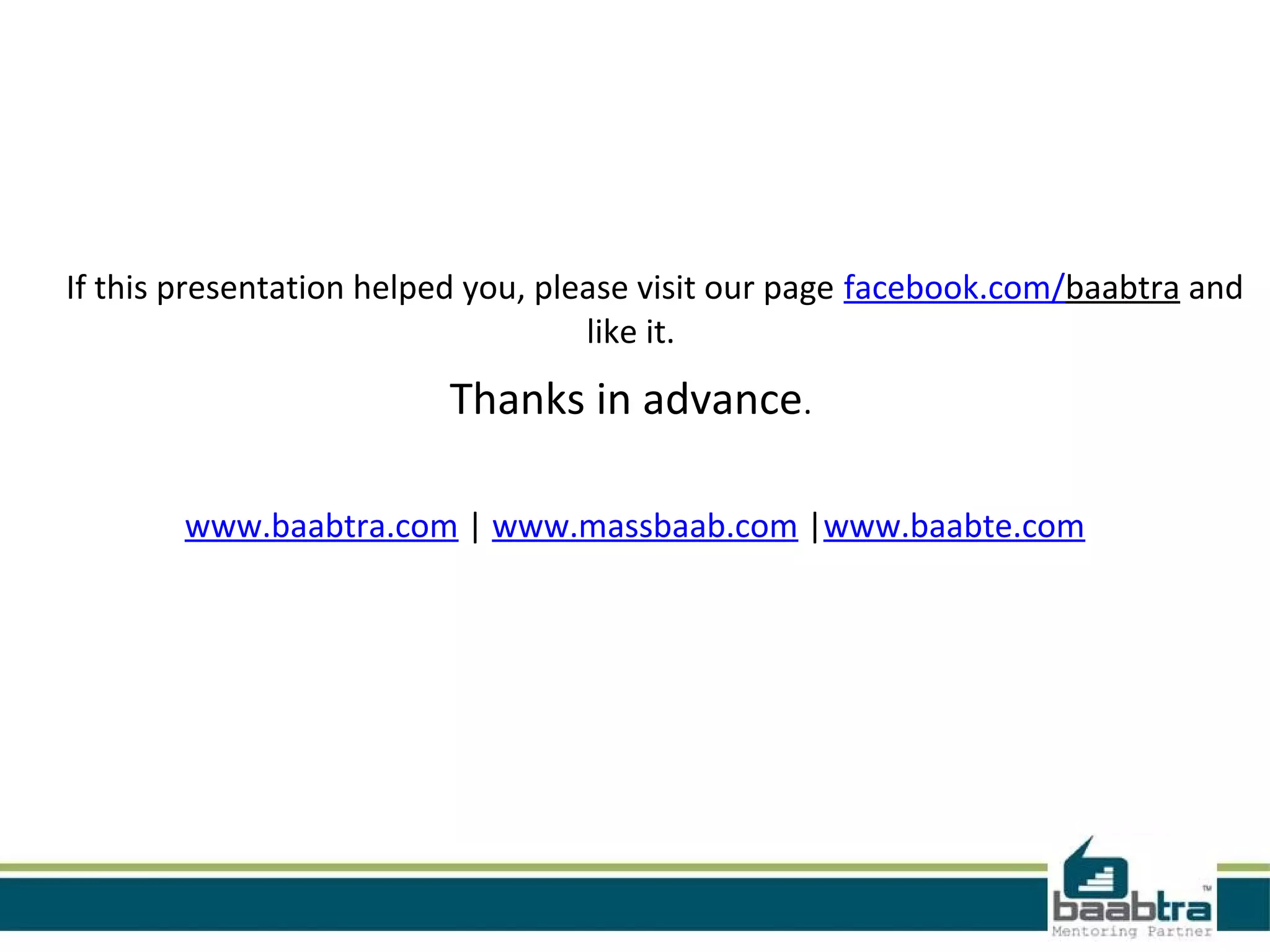This document provides information about a mentoring program run by Baabtra-Mentoring Partner. It includes a trainee's typing speed progress over 5 weeks, with targets and achievements. It also lists 3 job applications with company names, designations, and application dates. Finally, it discusses Python exceptions handling, including try/catch blocks, built-in exception classes, raising exceptions, and error types.

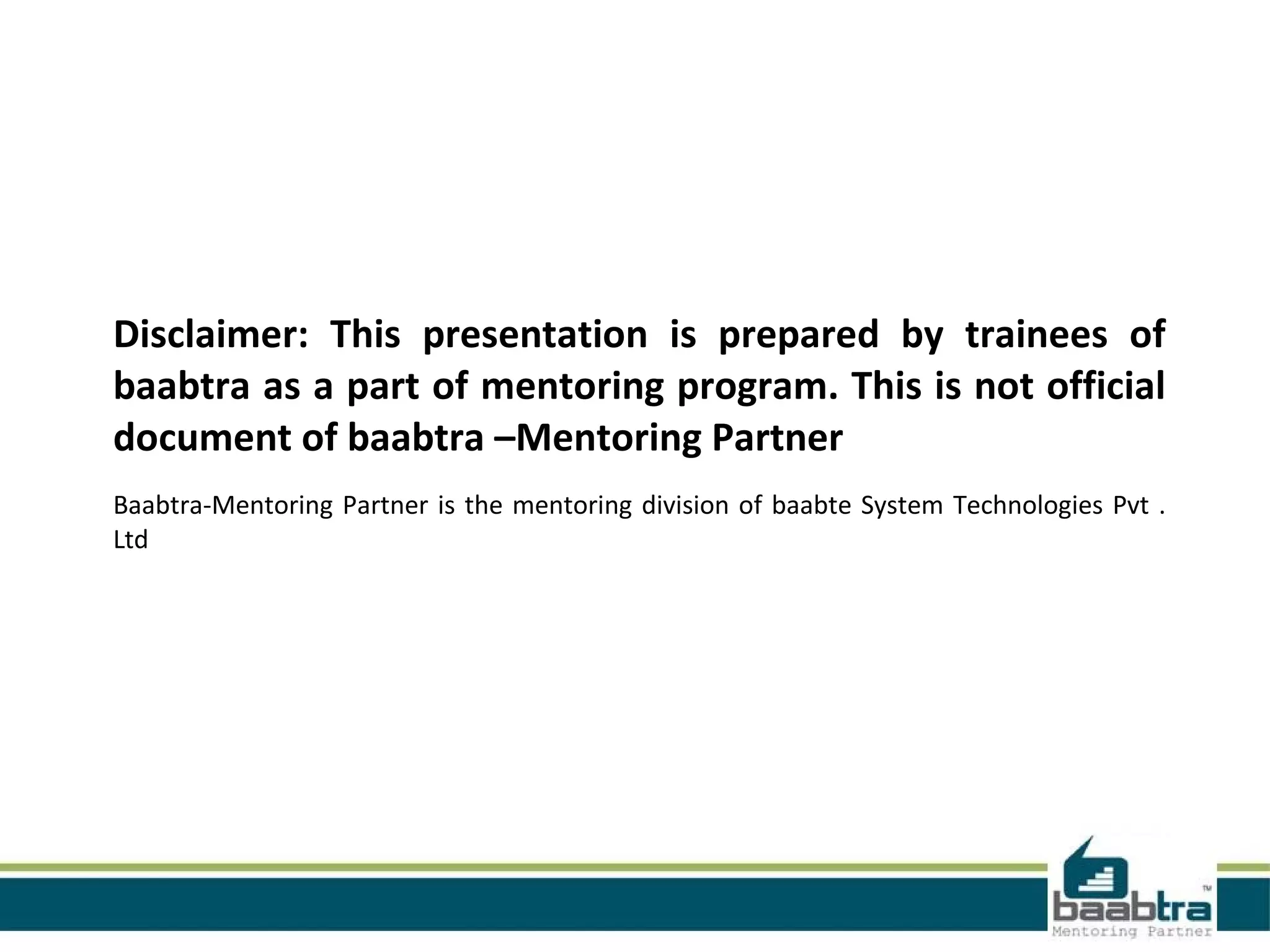
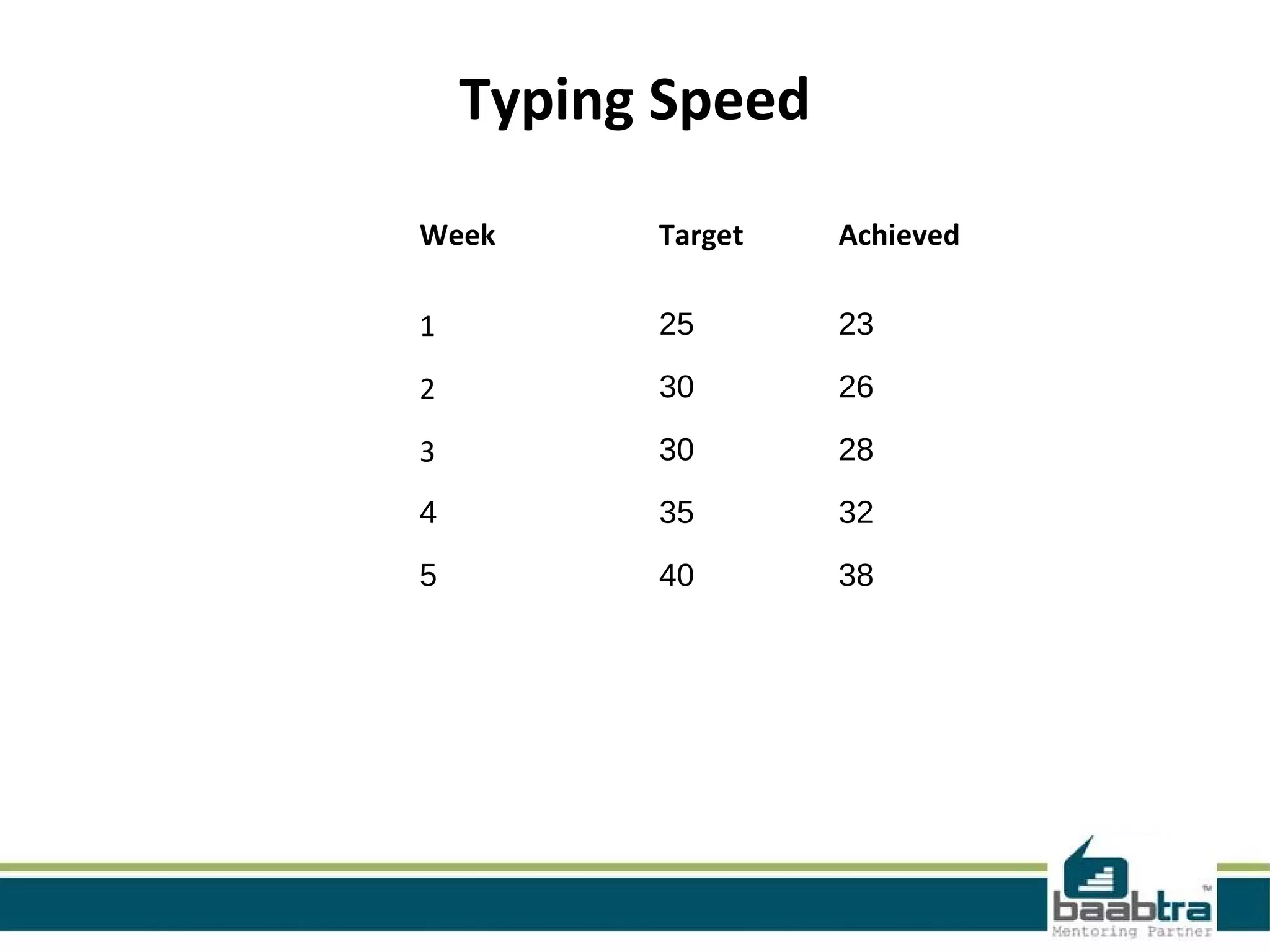
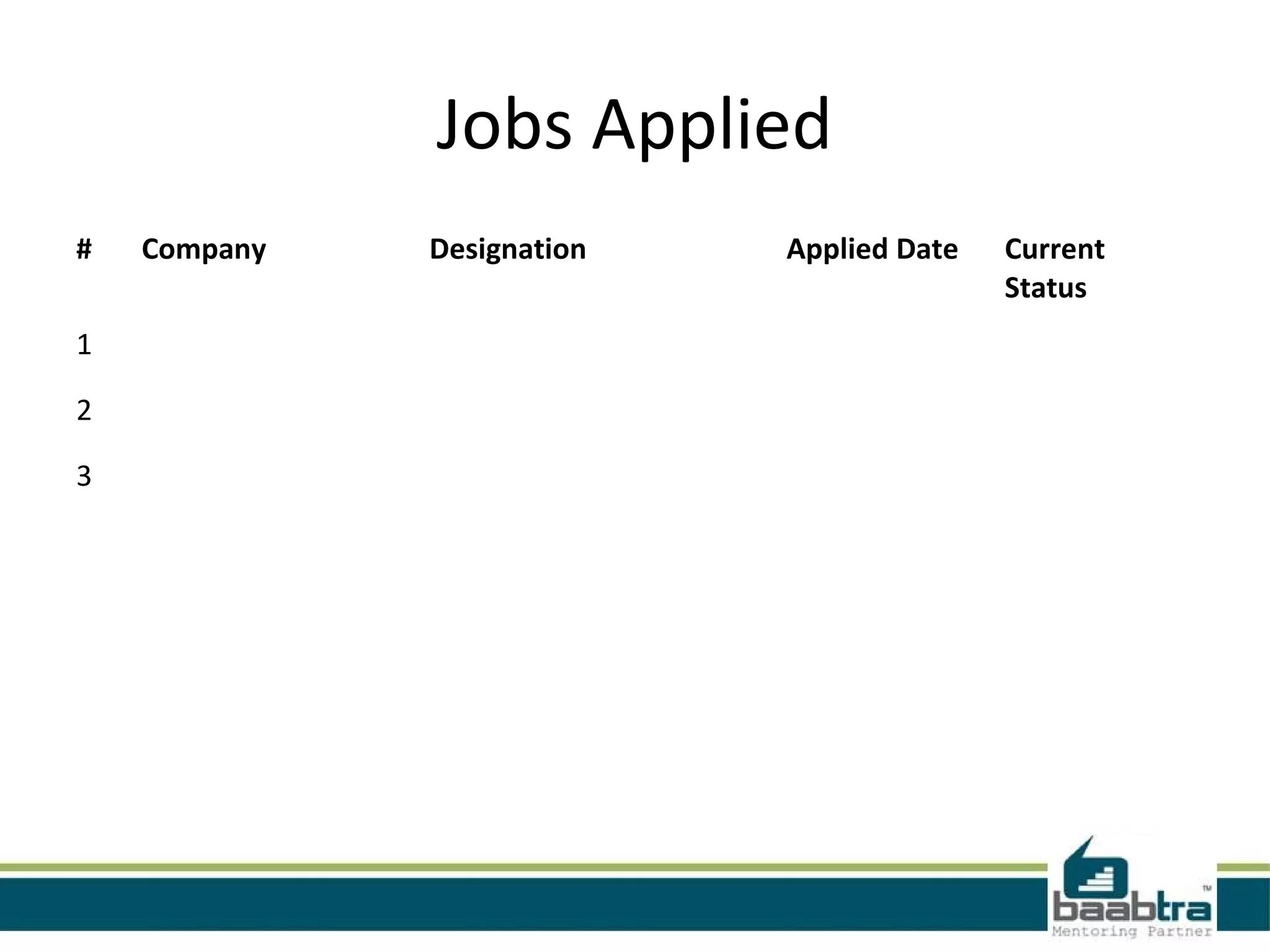
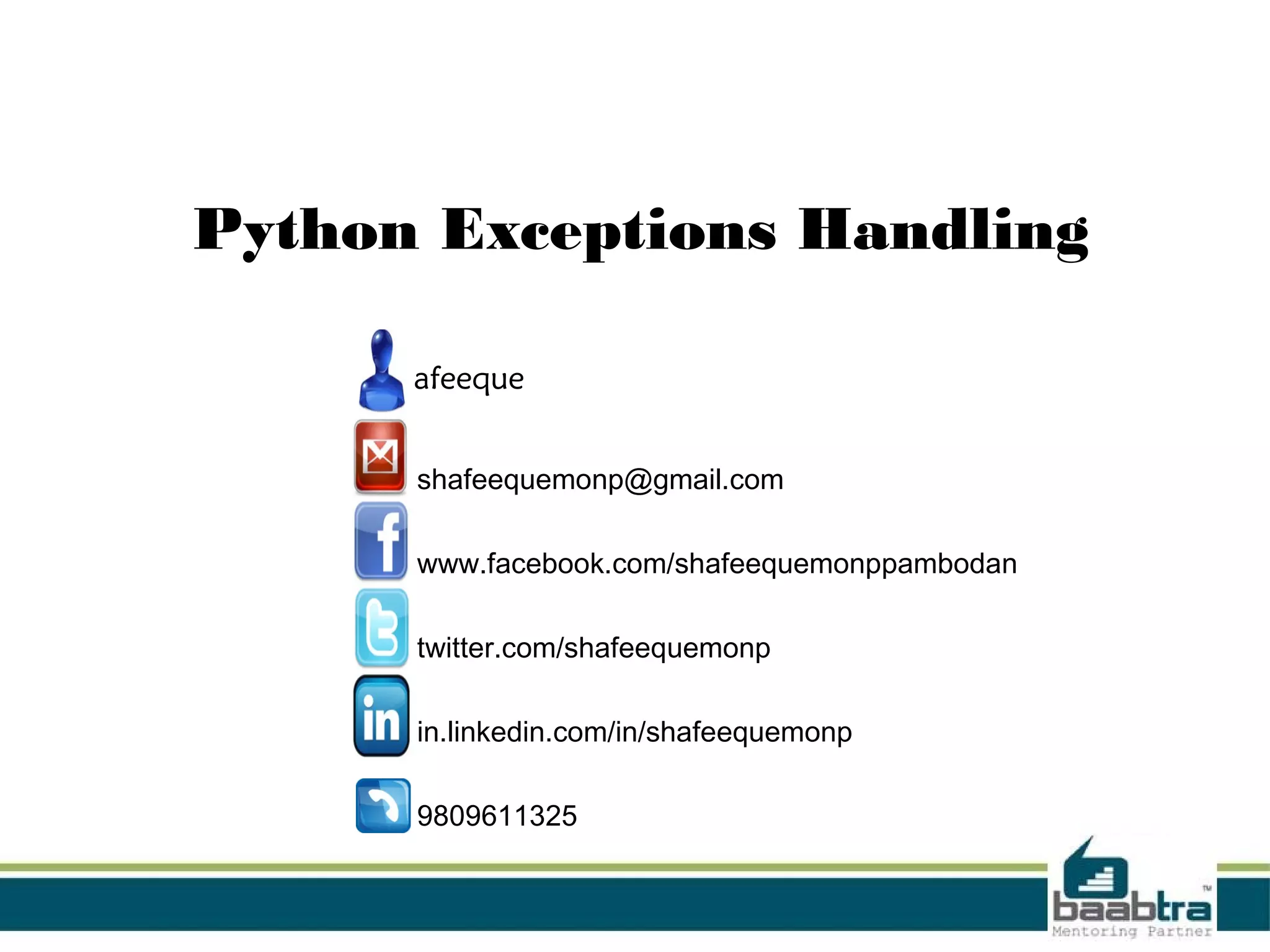
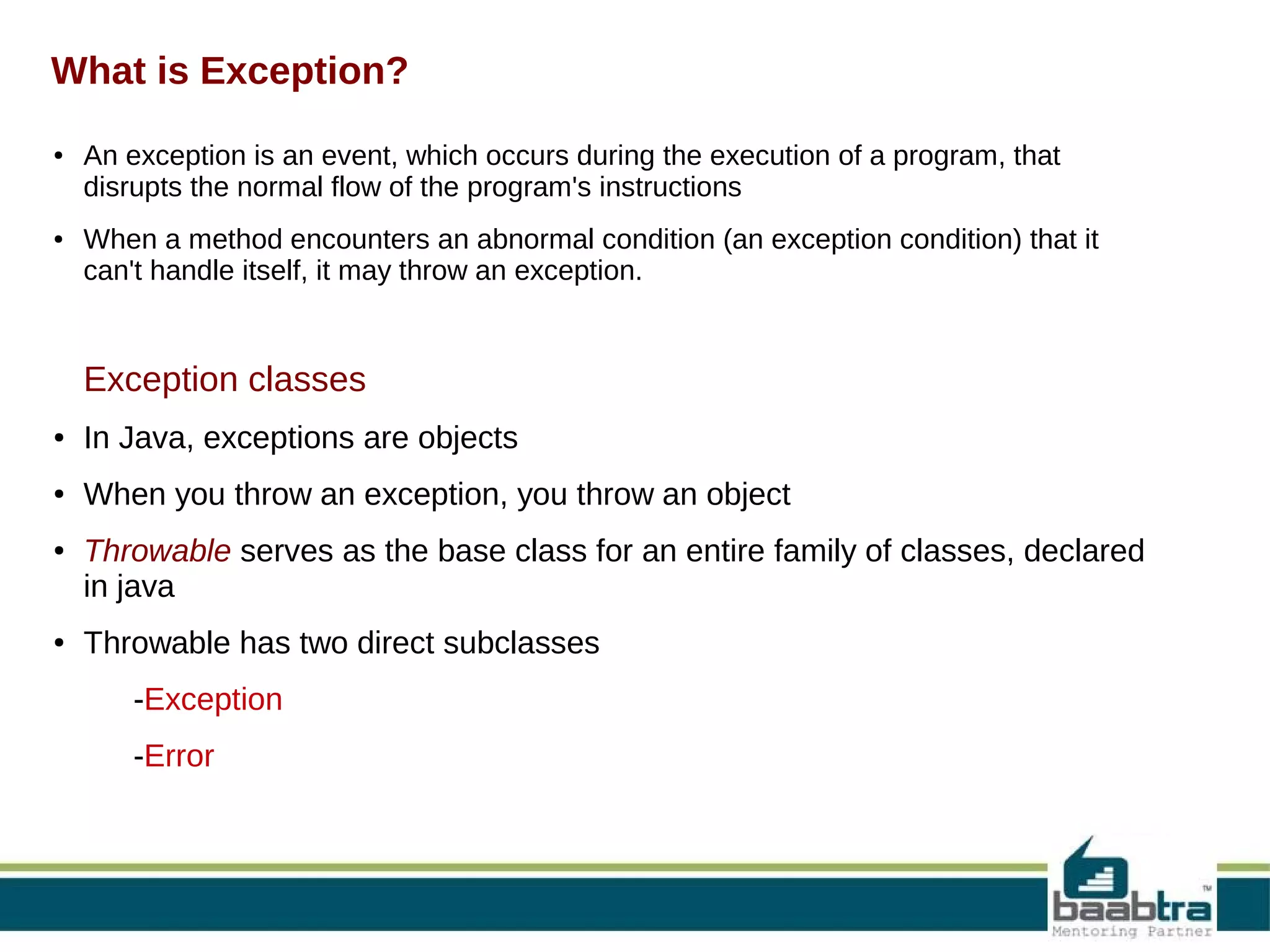
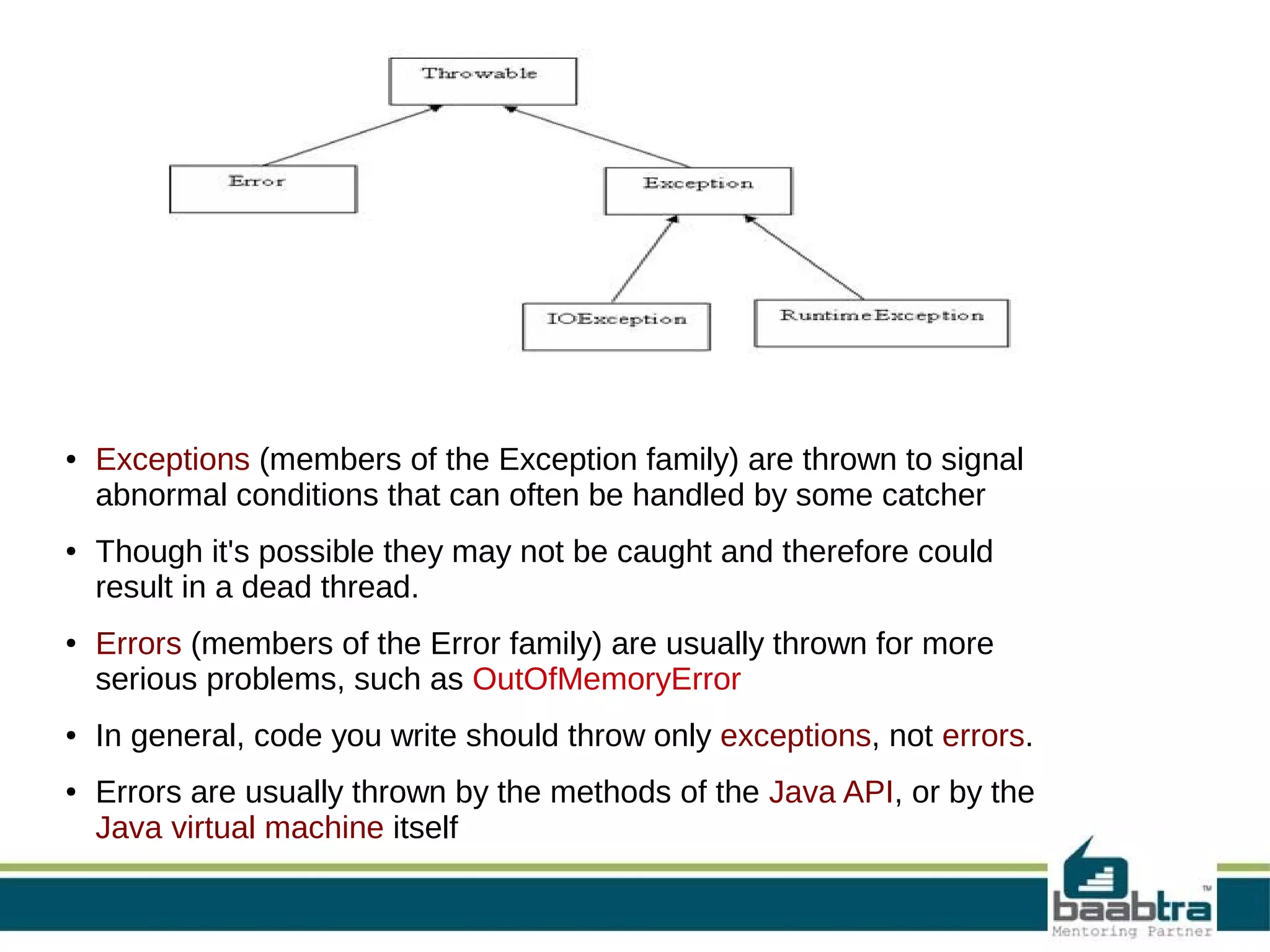
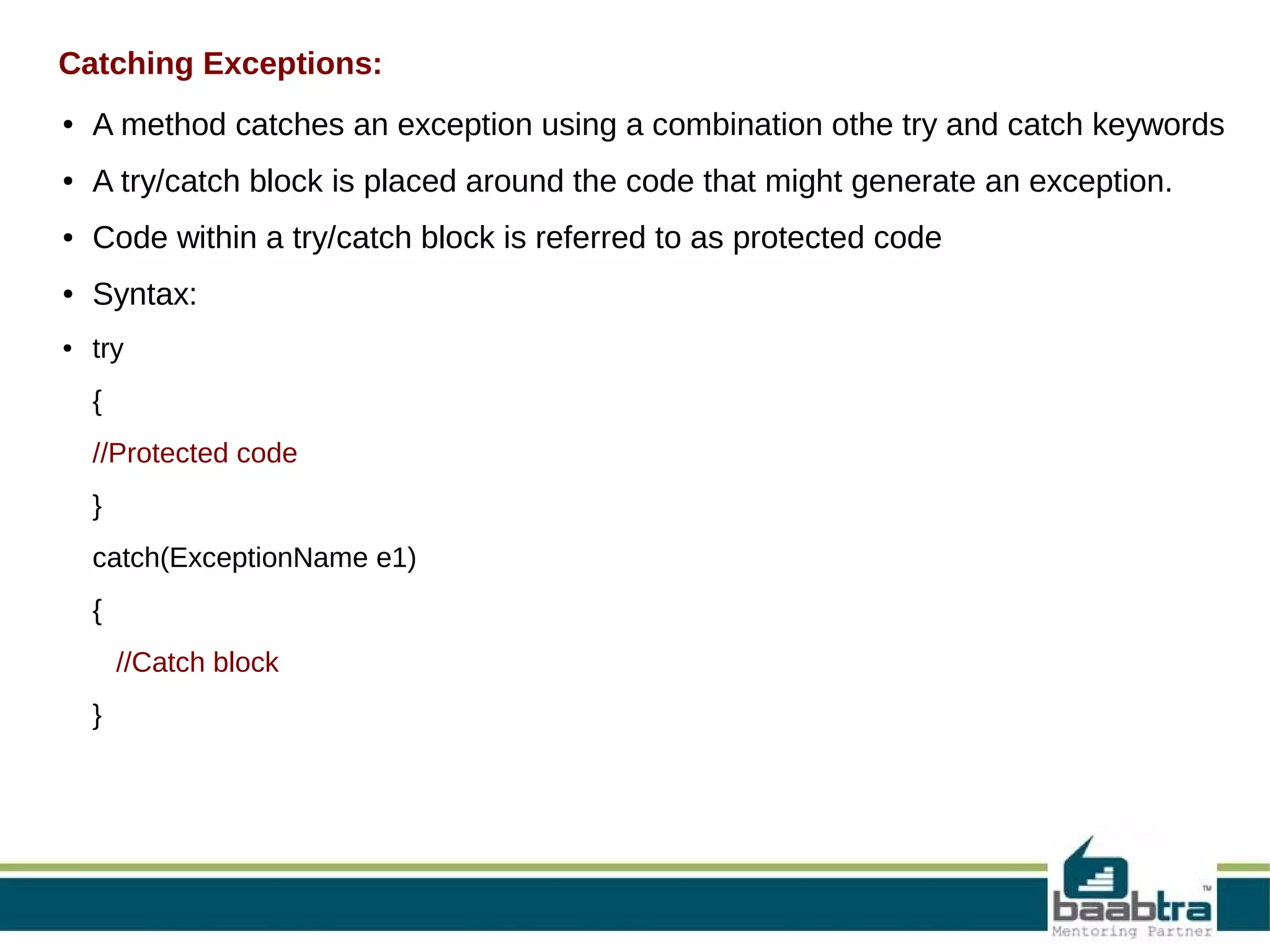
![// File Name : ExcepTest.java import java.io.*; public class ExcepTest{ public static void main(String args[]){ try{ int a[] = new int[2]; System.out.println("Access element three :" + a[3]); } catch(ArrayIndexOutOfBoundsException e){ System.out.println("Exception thrown :" + e); } System.out.println("Out of the block"); } } Output: Exception thrown Out of the block :java.lang.ArrayIndexOutOfBoundsException: 3](https://image.slidesharecdn.com/exception-131116014209-phpapp02/75/Exception-handling-in-python-9-2048.jpg)
